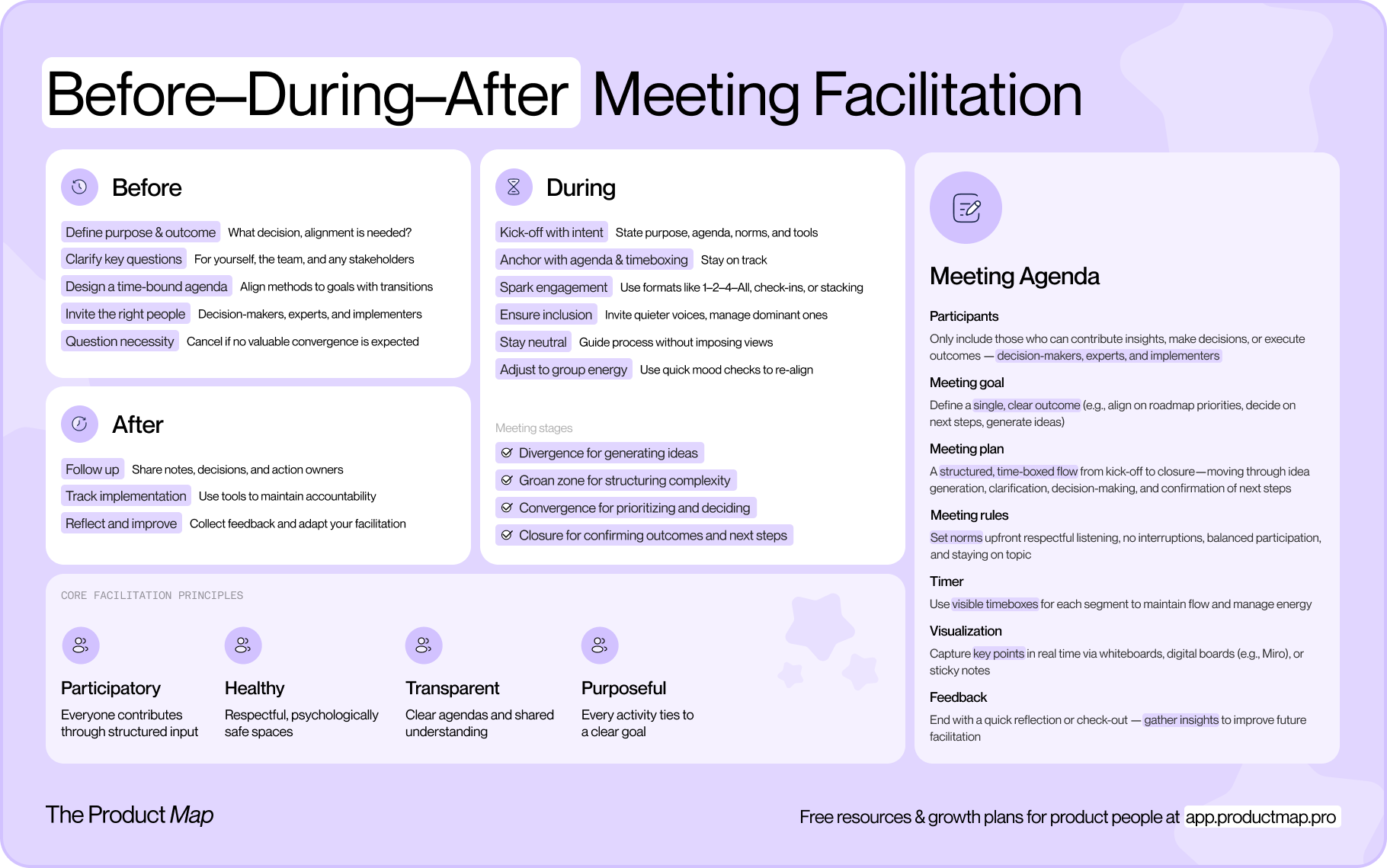Facilitation Mindset
Facilitators guide the group process with structure, neutrality, and empathy—helping teams stay focused, productive, and aligned.
A good facilitator should engage teams by creating a safe, inclusive space where every voice is heard, ideas are structured, and progress toward shared goals is clear and intentional.
Keeps meetings on track and builds trust
Effective facilitators maintain a neutral stance, uphold shared norms, and guide teams through moments of tension with calm and clarity.
Neutrality builds trust by focusing on process, not content.
The “Groan Zone” is natural—facilitators guide teams through it using structure and patience.
Ground rules create psychological safety and set expectations for respectful collaboration.
Prepares well, manages scope and timing
Well-run meetings require planning, structure, and rhythm.
Intentional agendas align every step with the meeting’s purpose.
Participation formats like stacking or silent reflection balance contributions and time.
The Diamond of Participation helps facilitators plan the meeting’s journey from divergence to decision.
Stays seutral, handles conflict with curiosity and empathy
Facilitators help surface and explore disagreement, not suppress it.
Curious neutrality guides without judgment, focusing on clarity.
Empathic techniques like paraphrasing and mirroring create space for mutual understanding.
Conflict becomes constructive when all voices are heard and assumptions are unpacked.




